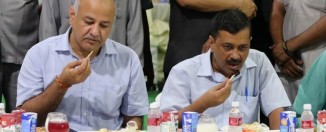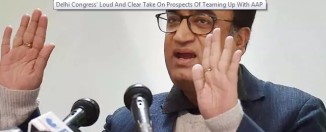Chief Minister Kejriwal’s Big Gamble Pays Off: Foreign Media
In a city where motorists routinely run red lights and drive on the wrong side of the road, many doubted the feasibility of Delhi leader Arvind Kejriwal’s plan to roughly halve the number of cars in India’s capital in a bid to reduce air pollution.
Yet with a few days to go in the campaign’s trial period, the city’s 17 million residents have largely played by the rules. While no reliable polls are available, the widespread compliance has triggered calls for similar policies in other parts of India and appears to have awakened a sense of civic duty.
All in all, Kejriwal’s gamble seems to be paying off.
“For the first time, the entire community is talking about pollution,” said Shiv Visvanathan, vice dean at the Jindal School of Government and Public Policy outside Delhi. “And the poor, rich and the middle class have participated.”
That doesn’t mean it’s had a drastic effect on air quality — the stated aim of the 15-day experiment to restrict the number of cars based on odd and even license plate numbers. The U.S. Embassy’s readings on Tuesday showed that the air was “Hazardous,” which means “everyone should avoid all physical activity outdoors.”
Nonetheless, the mere fact that the city didn’t erupt in chaos provides a boost for Kejriwal, who catapulted into politics as an anti-corruption crusader in 2012. In fact, faster commutes may have even won over some skeptical residents.
With more established opposition parties like Congress struggling to regroup after a historic national election defeat in 2014, Kejriwal, 47, is emerging as one of India’s boldest alternatives to Prime Minister Narendra Modi despite his party’s minuscule presence in parliament.
“He is obviously punching way above his weight,” Ajoy Bose, a Delhi-based author and frequent commentator on nightly news talk shows, said of Kejriwal. “He connects to the people and looks as if he has lots of guts to stand up to Modi.”
Still, Bose said, the prime minister doesn’t need to worry too much just yet. Kejriwal’s three-year-old Aam Aadmi Party has only four lawmakers in the 545-member lower house of the federal parliament, and little presence across vast swathes of India’s countryside.
“It’s too early to speculate about a national role for him,” Bose said. “He has no national network.”
That hasn’t stopped Kejriwal from trying. In the last national election, his party put up candidates in almost all of India’s states, and Kejriwal himself took on Modi directly in a constituency in Uttar Pradesh. He ended up getting trounced, along with his party.

Kejriwal roared back last year in Delhi state elections, leading his party to take 67 of 70 seats to stem Modi’s momentum. Exit polls had predicted a close race.
“He isn’t just happy with Delhi and has larger ambitions,” said Satish Misra, a political analyst at the Observer Research Foundation in New Delhi. “The odd-even experiment gives him a national fillip for all the right reasons but he will have to sustain the momentum beyond these 15 days.”
The move was targeted more at the middle class, which tends to back Modi, rather than the poorer voters that have formed the bulk of Kejriwal’s base. This was reflected in a host of exemptions, including motorcycles and scooters.
The Times of India blasted Kejriwal for taking a “classist approach” by seeking to “harass middle class car owners.”
Other media outlets have praised Kejriwal for doing something, even if the outcome doesn’t have much effect on pollution. “The Delhi government deserves to be complimented for having made a sincere effort in curbing vehicular pollution,” the Business Standard said.
A Delhi court on Monday said the program could continue as planned after hearing complaints from residents who suffered from the policy. Kejriwal has said he’ll assess the odd-even policy after Jan. 15 and decide whether it will be extended.
Nishikanta Mohapatra, an Aam Aadmi spokesman, said the program “will help us in the long run to consolidate our position.”





